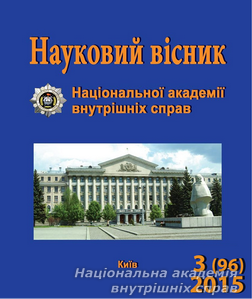History of development of legislation on responsibility for deliberate grievous bodily harm
Keywords:
criminal liability, historical periods, grievous bodily harm
Abstract
Crimes against life and health, including causing grievous bodily harm, are one of the oldest crimes in criminal law. Research of the history of criminal law makes it possible to analyze its development in the field of life and health. Threat of violence as a separate type of socially dangerous behavior occurs when such a threat does not cause the victim’s death or injury. Otherwise, if such effects occurred intentionally, the legal nature of the threat of violence is changing – from a single type of socially dangerous behavior ‟converted” to act in the mechanism of causing death or bodily harm to the victim. The urgency of the problem is that the crime of grievous bodily harm existed throughout human history, under different conditions and circumstances. Historical experience shows that during the period of radical change of social, socio-economic structure there is a significant increase in crime in general, and especially – violent crimes, which relates to grievous bodily harm. Analysis of legislation on liability for causing intentional grievous bodily harm should begin from ancient time when the basic foundations of the concept of the crime – since the formation of Kievan Rus. This article discusses the historical aspects of legislation on liability for intentional causing grievous bodily harm from the time of formation of Kievan Rus to the present time.Downloads
Download data is not yet available.
Abstract views: 54 PDF Downloads: 906
How to Cite
[1]
Stoliar, T. 1. History of development of legislation on responsibility for deliberate grievous bodily harm. Scientific Herald of the National Academy of Internal Affairs. 96, 3 (1), 254-266.
Issue
Section
Historical aspects
- Authors reserve the right to authorship of their own work and transfer to the magazine the right of the first publication of this work under the terms of the Creative Commons Attribution License, which allows other persons to freely distribute published work with mandatory reference to authors of the original work and the first publication of an article in this magazine.
- Authors have the right to enter into separate additional agreements on non-exclusive dissemination of the work in the form in which it was published in the journal (for example, to post an article in the institution's repository or to publish as part of a monograph), provided that the link to the first publication of the work in this journal is maintained.
- The journal's policy allows and encourages the posting of articles by authors on the Internet (for example, in electronic storehouses of institutions or on personal websites), both before the submission of this manuscript to the editorial office and during its editorial processing, as this contributes to the creation of a productive scientific discussion and positively affects the efficiency and dynamics of citing the published work.




